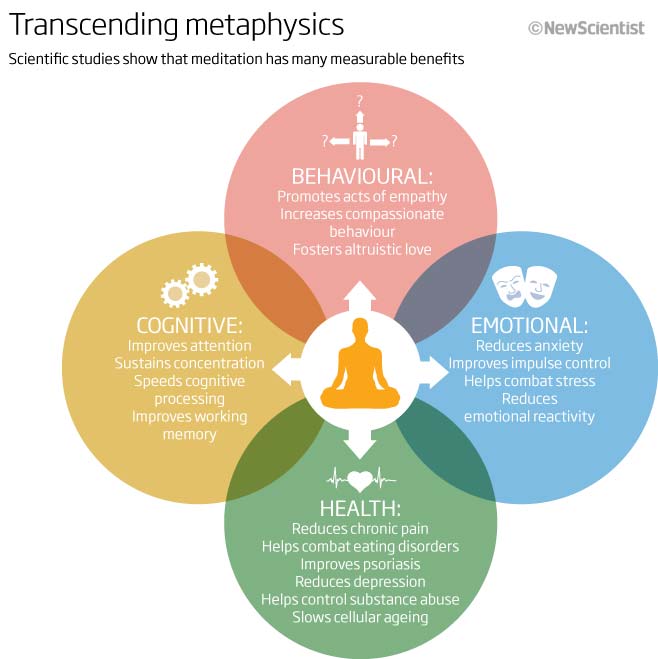
From issue 2794 of New Scientist magazine, page 32-35.
How to meditate
There are numerous meditation styles, but the two most commonly studied by researchers are focused attention meditation, in which the aim is to stay focused on a chosen thing such as an icon, a mantra or the breath, and mindfulness or open monitoring meditation, where practitioners try to become aware of everything that comes into their moment-by-moment experience without reacting to it.
For focused attention meditation, start by sitting on a cushion or chair with your back straight and your hands in your lap and eyes closed. Then concentrate your mind on your chosen object – say your breathing, or more particularly the sensation of your breath leaving your mouth or nostrils. Try to keep it there. Probably your mind will quickly wander away, to an itch on your leg, perhaps, or to thoughts of what you will be doing later. Keep bringing it back to the breath. In time this will train the mind in three essential skills: to watch out for distractions, to “let go” of them once the mind has wandered, and to re-engage with the object of meditation. With practice, you should find it becomes increasingly easy to stay focused.
In mindfulness meditation the aim is to monitor all the various experiences of your mind – thoughts, emotions, bodily sensations – and simply observe them, rather than trying to focus on any one of them. Instead of grasping at whatever comes to mind, which is what most of us do most of the time, the idea is to maintain a detached awareness. Those who develop this skill find it easier to manage emotions in day-to-day life.
The more you practise, the deeper the changes will be. As Buddhist teacher Alan Wallace puts it: “You have now set out on one of the greatest expeditions as you explore the hidden recesses of your mind.”
Michael Bond is a consultant for New Scientist